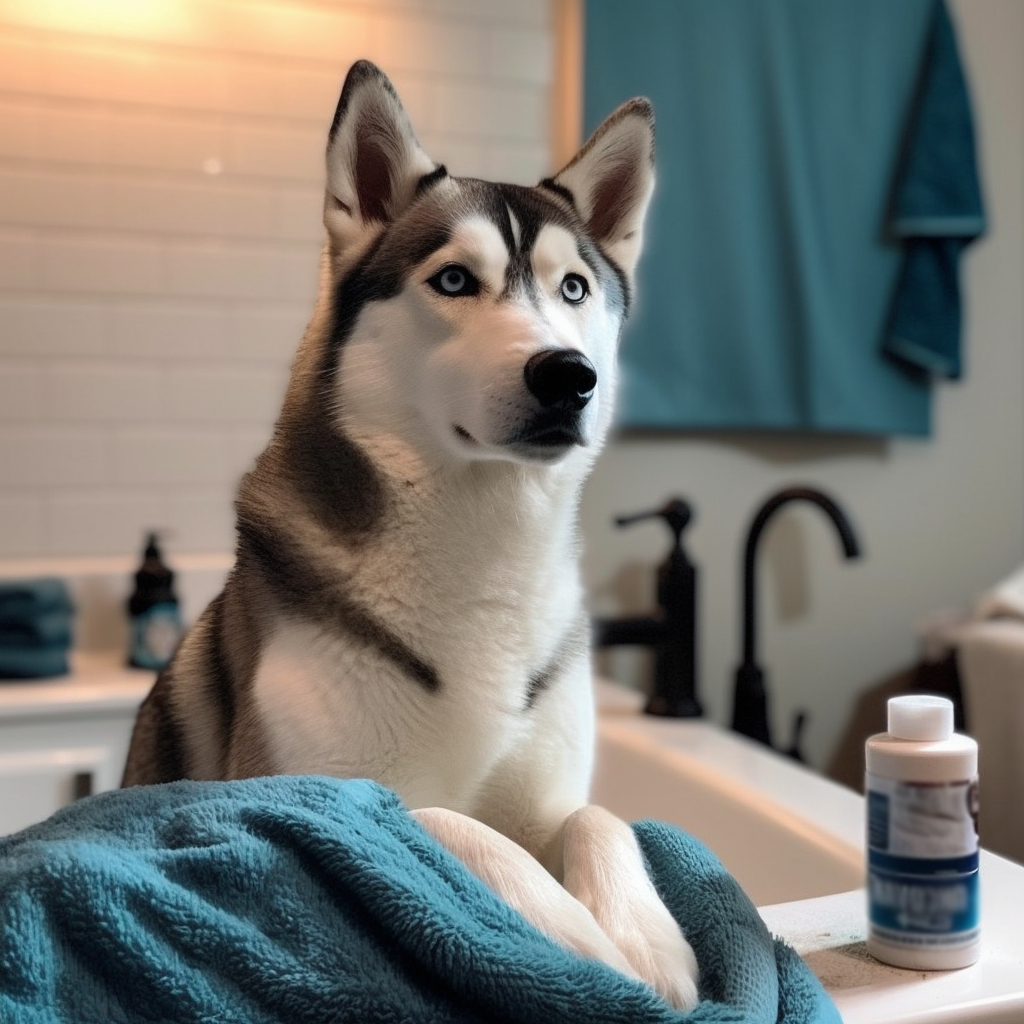
As a proud Husky owner, you’re undoubtedly in awe of your dog’s stunning double coat. While this beautiful fluff serves a purpose, it also requires proper grooming to keep your Husky healthy and happy. In this in-depth guide on Husky Grooming, we’ll explore the importance of grooming, understand the unique aspects of the Husky coat, and introduce essential grooming tools and techniques. So let’s dive in and help your fluffy companion look and feel their best!
Table of Contents
1. Understanding the Husky Coat
2. Essential Husky Grooming Tools
3. Brushing and De-shedding
4. Bathing Your Husky
5. Nail Trimming and Maintenance
6. Ear Cleaning and Care
7. Dental Care for Huskies
8. Grooming Your Husky’s Paws and Tail
9. Professional Grooming Services
10. Maintaining a Healthy Coat and Skin
>> Article Summary
1. Understanding the Husky Coat
The Double Coat
The Siberian Husky boasts a magnificent double coat that consists of a dense undercoat and a longer topcoat. The undercoat, made of soft, downy hairs, provides insulation against cold weather. The topcoat, comprised of water-repellent guard hairs, shields your Husky from wetness and debris.
Shedding Patterns and “Blowing Coat” Season
Huskies are known for their shedding prowess, especially during the “blowing coat” season. This phenomenon occurs twice a year when Huskies shed their undercoat in large clumps. Expect a substantial increase in shedding during these periods, which typically happen in the spring and fall.
Purpose of the Coat and Temperature Regulation
The double coat plays a crucial role in temperature regulation, keeping your Husky warm in cold climates and cool in warmer environments. The coat’s insulation and protection properties are crucial to their health, making proper grooming a priority for all Husky owners.
2. Essential Husky Grooming Tools
Slicker Brush
A slicker brush is a must-have for every Husky owner. With fine, short bristles, this brush effectively removes loose fur and debris from your dog’s topcoat, making it ideal for daily use. If you don’t have one, here’s a quick link to some Husky slicker brushes.
Check out our guide on Husky brushes for a more detailed review of picking the right brush.
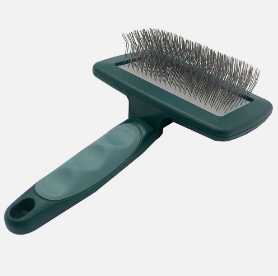
Undercoat Rake or Deshedding Tool
Given the dense nature of your Husky’s undercoat, a specialized tool like an undercoat rake or deshedding tool is necessary to reach deep and remove dead hair. These tools are particularly helpful during the “blowing coat” season. Here’s a link to Husky undercoat rakes if you need.
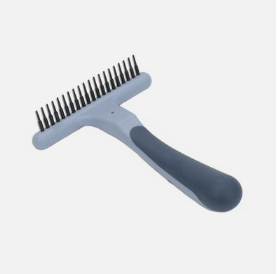
Nail Trimmers
Keep your Husky’s nails at a comfortable length with a pair of dog-specific nail trimmers. Long nails can cause discomfort or even injury, so regular trimming is essential. Check out our guide on trimming a Husky’s nails for helpful tips.
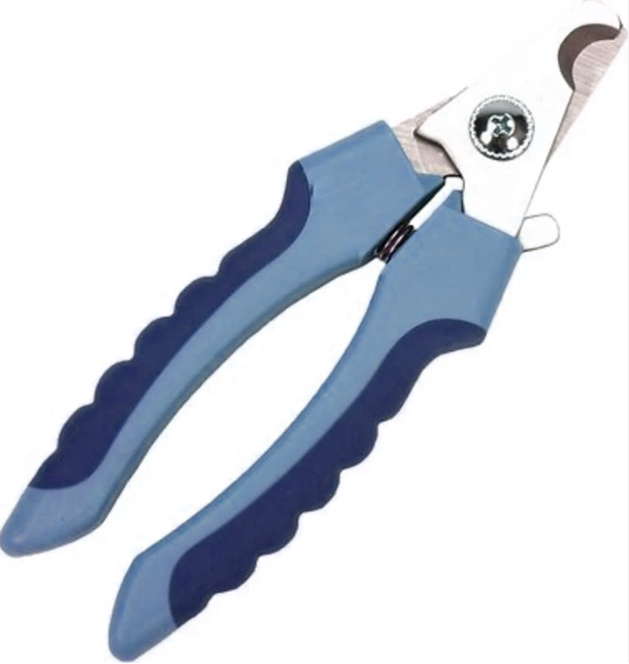
Dog-Specific Shampoo and Conditioner
Select a gentle, dog-specific shampoo and conditioner that caters to the needs of a double-coated breed. These products should clean and moisturize without stripping your dog’s coat of natural oils. We recommend these good shampoos for Huskies.
Dog-Specific Toothpaste and Toothbrush
Don’t forget about your Husky’s dental health! Use a dog-specific toothpaste and toothbrush to prevent bad breath, gum disease, and other dental issues. Regular teeth brushing is crucial, ideally daily or at least several times a week. If your Husky resists brushing, consider dental chews or toys as an alternative.
Ear Cleaning Solution
Invest in a gentle, dog-specific ear cleaning solution to keep your Husky’s ears healthy and free from infection. Regular ear cleaning is essential, and you should inspect and clean their ears once a week. Find suitable Husky ear cleaning solutions here.
Grooming Scissors and Thinning Shears
While not used as frequently as other tools, grooming scissors and thinning shears are useful for trimming stray hairs and maintaining your Husky’s neat appearance. Be sure to choose high-quality tools designed specifically for dog grooming.
3. Brushing and De-shedding
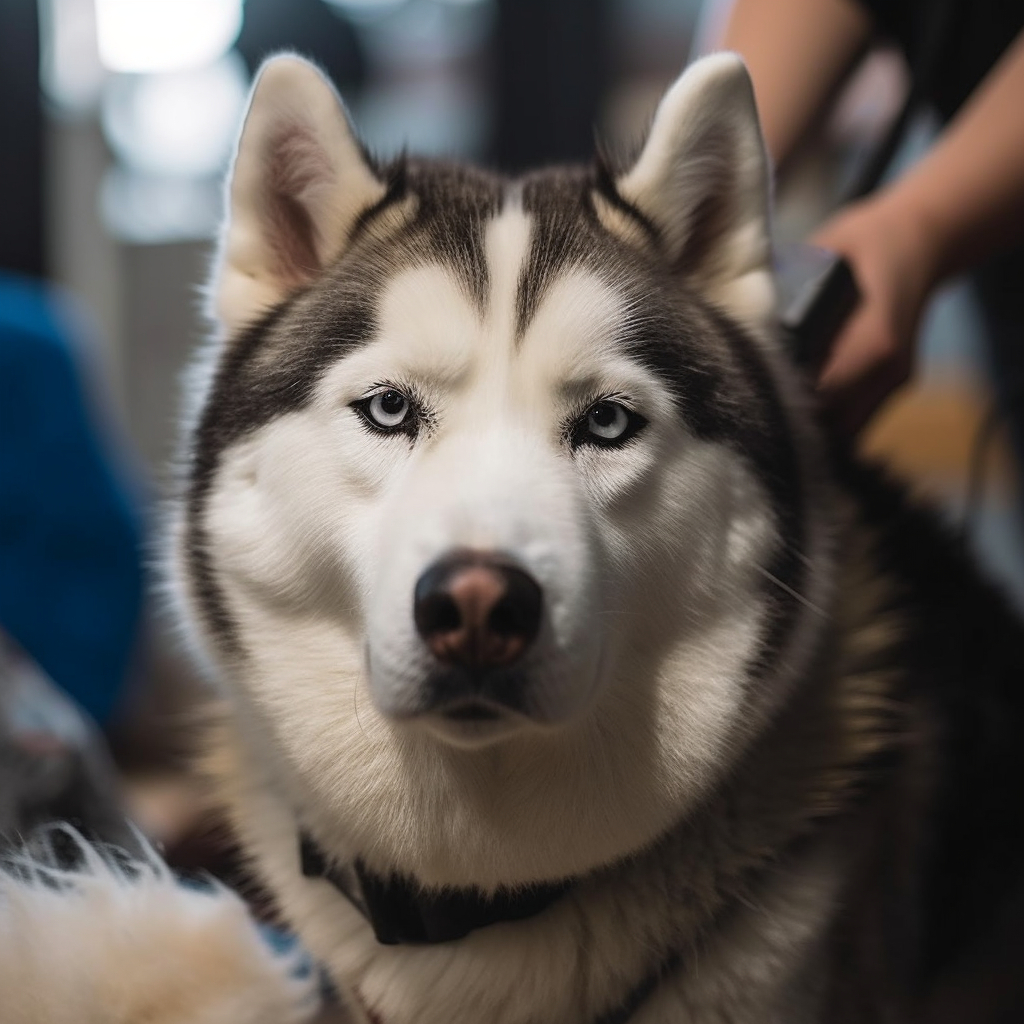
Importance of Regular Brushing
The cornerstone of Husky grooming is regular brushing. Consistent brushing not only keeps your dog’s coat healthy but also minimizes shedding, which helps maintain a cleaner home environment. Make sure to brush your Husky at least once a week, increasing the frequency during shedding season.
Frequency of Brushing and Adjustments for Shedding Season
During the “blowing coat” season, you’ll need to adjust your Husky’s grooming routine. Plan to brush your dog more frequently, even daily, to manage the increased shedding. This will prevent matting and keep their coat looking its best.
Techniques for Effective Brushing and De-shedding
When brushing your Husky, start by using the slicker brush on the topcoat to remove loose fur and debris. Next, utilize the undercoat rake or deshedding tool to tackle the dense undercoat. Be gentle yet thorough, brushing in the direction of hair growth. For a more detailed guide on Husky de-shedding, visit our Husky deshedding page.
Tips for Making Brushing a Pleasant Experience for Your Husky
To ensure your Husky enjoys their grooming sessions, create a calm, positive environment. Offer treats and praise as rewards for good behavior, and be patient as your dog becomes accustomed to the process. With time and consistency, your Husky will come to associate grooming with positive experiences and quality bonding time with you.
4. Bathing Your Husky
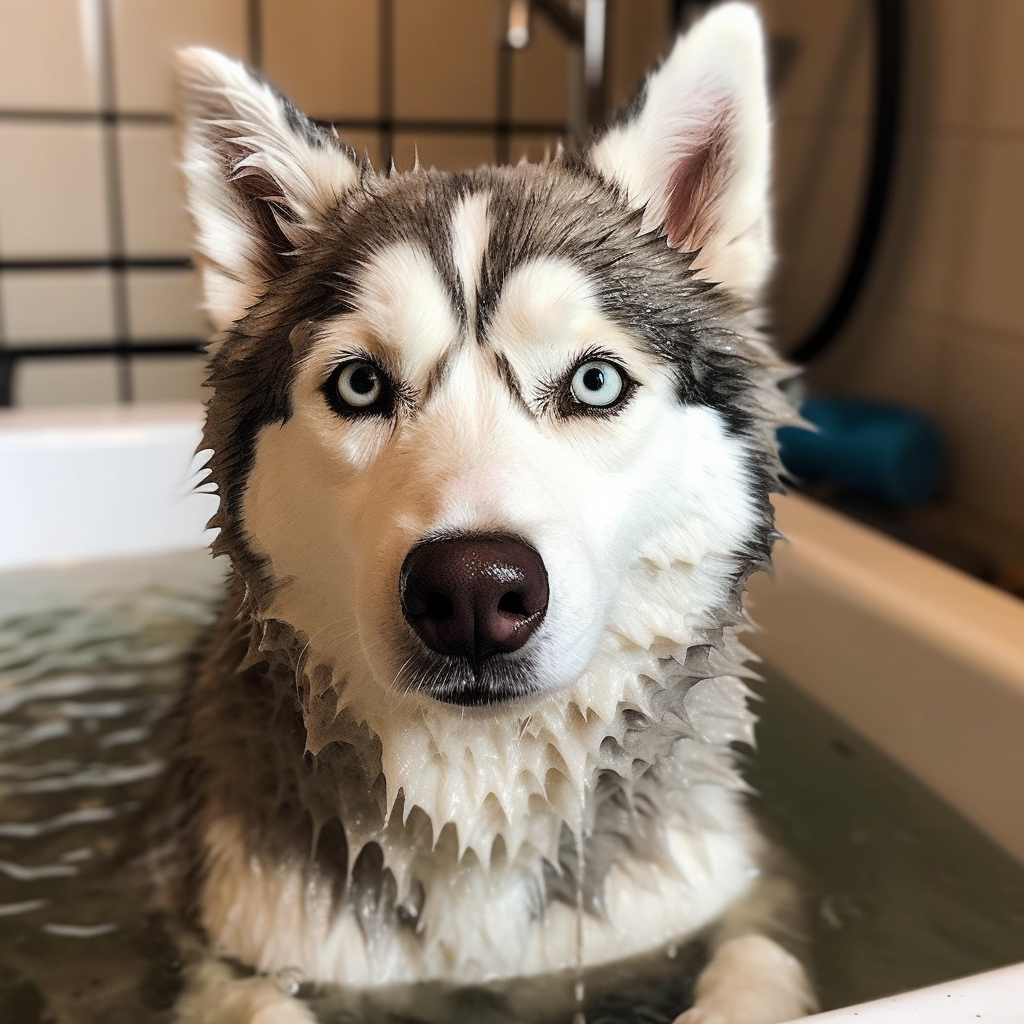
Recommended Bathing Frequency
Huskies have a naturally clean coat that requires minimal bathing. Generally, you should bathe your Husky once every 2-3 months or when they become noticeably dirty. Overbathing can strip their coat of essential oils, leading to skin issues.
Choosing the Right Shampoo and Conditioner
Opt for a mild, dog-specific shampoo and conditioner designed for double-coated breeds. These products should be gentle on their skin and coat while effectively removing dirt and debris. Avoid human products, as they can be too harsh for your dog. If you need a quick list, here are some good shampoos for Huskies >>
Step-by-Step Guide to Bathing a Husky
- Brush your Husky thoroughly to remove loose hair and tangles.
- Place your Husky in a bathtub or an appropriate outdoor area.
- Wet their coat thoroughly with lukewarm water.
- Apply shampoo and gently massage it into their coat, avoiding their eyes, ears, and mouth.
- Rinse well to remove all shampoo residue.
- Apply conditioner and massage it into their coat.
- Rinse thoroughly to remove any remaining product.
- Pat your Husky dry with a towel or use a dog-specific blow dryer on a low-heat setting.
- Brush their coat once more to remove any remaining loose hair.
For a guide specifically for puppies, see Bathing a Husky Puppy >>
Tips for Making Bath Time Enjoyable for Your Dog
Use praise, treats, and a gentle approach to make bath time a positive experience. Ensure the water temperature is comfortable and avoid getting water in their eyes, ears, or mouth. Gradually introduce your Husky to the bathing process to minimize stress and build a positive association.
5. Nail Trimming and Maintenance
Importance of Regular Nail Trimming
Regular nail trimming is essential for your Husky’s comfort and overall health. Overgrown nails can cause pain, difficulty walking, and may lead to infections. Aim to trim your dog’s nails every 3-4 weeks or as needed.

Choosing the Right Nail Trimmers
Select a pair of high-quality, dog-specific nail trimmers. Scissor-style or guillotine-style trimmers are popular choices. Here’s a quick link to some options of good nail trimmers for Huskies.
Step-by-Step Guide to Trimming Your Husky’s Nails
- Choose a quiet, well-lit area for nail trimming.
- Gently hold your Husky’s paw and identify the quick (the blood vessel inside the nail).
- Using the nail trimmers, carefully trim the tip of each nail, avoiding the quick.
- Smooth any rough edges with a nail file designed for dogs.
- Praise and reward your Husky with treats for their cooperation.
See also, our detailed guide on trimming a Husky’s nails.
Tips for Avoiding the Quick and Making Nail Trimming Stress-Free
Trim your dog’s nails in small increments to avoid cutting the quick. If your Husky has dark nails, use a flashlight to help locate the quick. Be patient and take breaks as needed to keep the experience positive and stress-free. Regularly handling your Husky’s paws can make them more comfortable with the nail trimming process.
6. Ear Cleaning and Care
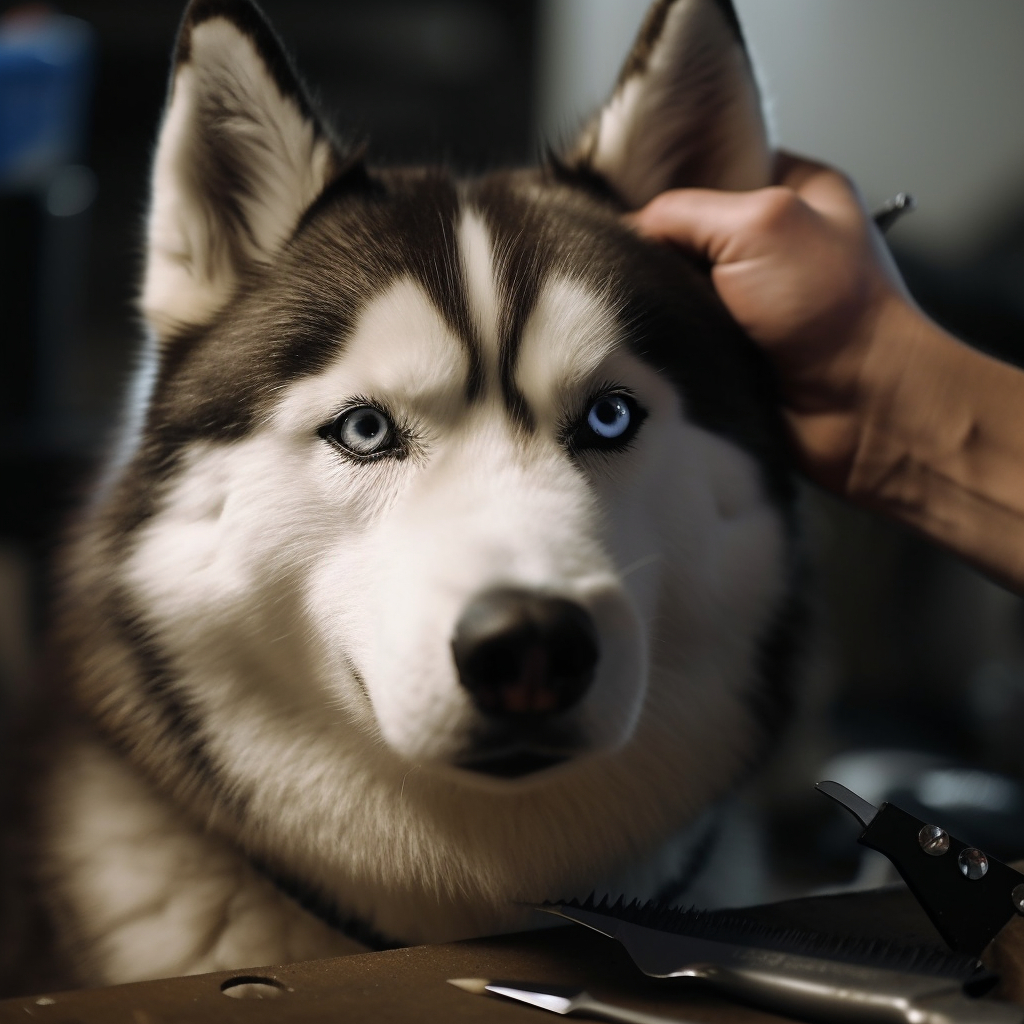
Importance of Regular Ear Cleaning
Regular ear cleaning is important to prevent infections and maintain your Husky’s overall health. Aim to clean their ears every 2-4 weeks or as needed, depending on factors such as earwax buildup and their activity level.
Choosing the Right Ear Cleaning Solution
Select a dog-specific ear cleaning solution designed to dissolve wax, debris, and bacteria. Avoid alcohol-based products, as they can be too harsh and cause irritation. Here’s a quick list to some Husky ear cleaning solutions
Step-by-Step Guide to Cleaning Your Husky’s Ears
- Choose a quiet, well-lit area for ear cleaning.
- Gently hold your Husky’s ear flap up to expose the ear canal.
- Apply the ear cleaning solution to a cotton ball or gauze.
- Use the cotton ball or gauze to gently clean the outer ear, avoiding the ear canal.
- Repeat the process with a clean cotton ball or gauze as needed until the ear is clean.
- Use a dry cotton ball or gauze to remove any excess solution and gently dry the ear.
- Praise and reward your Husky with treats for their cooperation.
Tips for Making Ear Cleaning a Comfortable Experience
Be gentle and patient during the ear cleaning process. Speak softly and use treats to create a positive association. Avoid using cotton swabs, as they can push debris further into the ear canal and potentially cause injury. Gradually introduce your Husky to ear cleaning to minimize stress.
If you’d like a little bit more detail, see our full length guide on How to Clean a Husky’s Ears >>
7. Dental Care for Huskies
Importance of Regular Dental Care
Regular dental care is essential for maintaining your Husky’s oral health and preventing issues such as gum disease, tooth decay, and bad breath. Ideally, you should brush your dog’s teeth daily or at least several times a week.
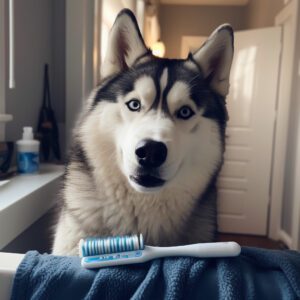
Choosing the Right Toothpaste and Toothbrush
Select a dog-specific toothpaste and toothbrush. Dog toothpaste is designed to be swallowed, unlike human toothpaste which can be harmful to dogs. A dog-specific toothbrush has softer bristles and is angled to better clean your dog’s teeth.
Step-by-Step Guide to Brushing Your Husky’s Teeth
- Choose a quiet, well-lit area for teeth brushing.
- Hold your Husky’s muzzle gently but firmly.
- Apply a small amount of dog toothpaste to the toothbrush.
- Brush your dog’s teeth using gentle, circular motions, focusing on the gum line and outer surfaces of the teeth.
- Gradually work your way to the inner surfaces of the teeth as your dog becomes more comfortable with the process.
- Praise and reward your Husky with treats for their cooperation.
Alternative Options for Dental Care: Chews and Toys
While brushing your Husky’s teeth is the most effective method of dental care, other options can help supplement their oral hygiene routine. Dental chews, water additives, and dental toys can help reduce plaque and tartar buildup. Consult your veterinarian for recommendations on the most suitable products for your Husky.
By following these guidelines for bathing, nail trimming, ear cleaning, and dental care, you can ensure your Siberian Husky stays clean, healthy, and happy. Remember, patience and consistency are key when introducing your dog to new grooming routines. Always reward and praise your Husky for their cooperation, and don’t hesitate to consult your veterinarian for further guidance and advice.
8. Grooming Your Husky’s Paws and Tail
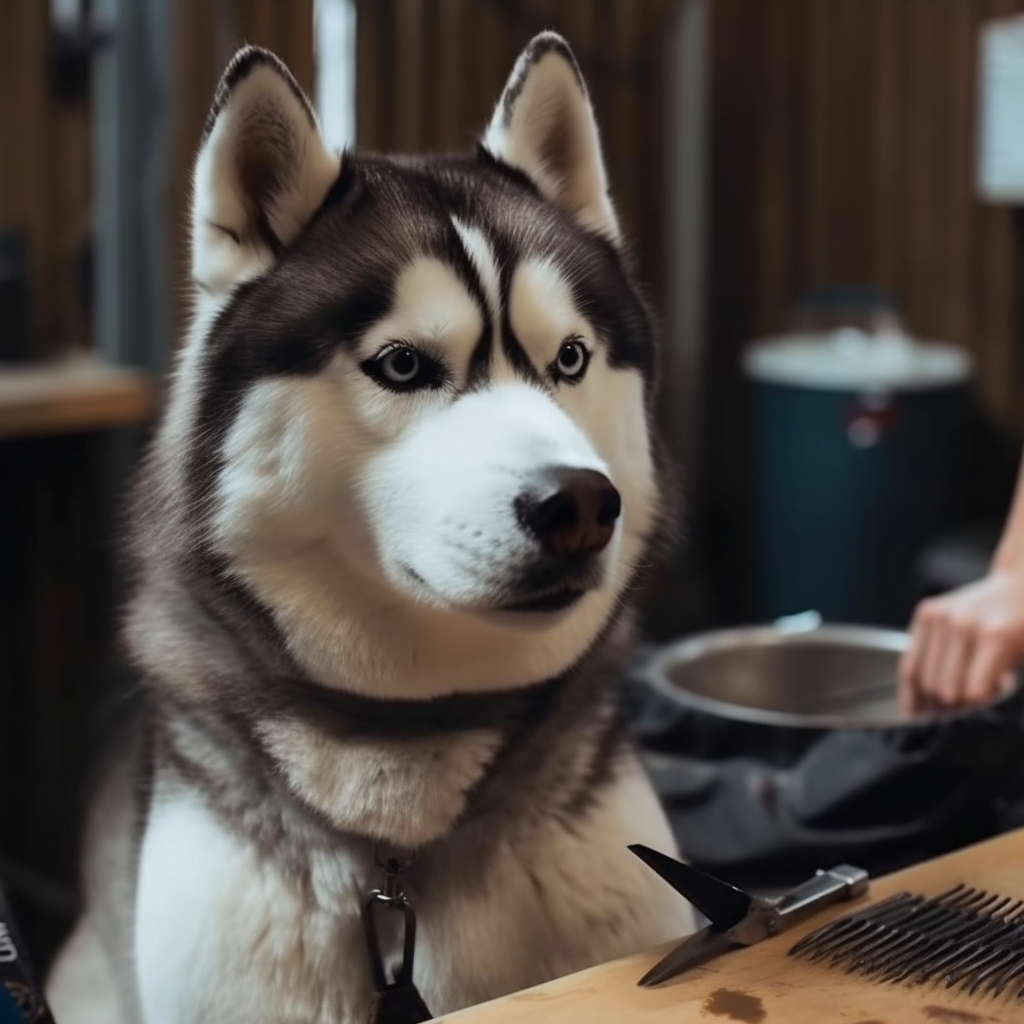
Importance of paw and tail grooming
Regular grooming of your Husky’s paws and tail is essential for maintaining their overall health and comfort. These areas can be prone to matting, debris accumulation, and potential injury if not properly maintained.
Tips for trimming fur between paw pads and around the tail
Use grooming scissors to carefully trim the fur between your Husky’s paw pads and around their tail. Keep the hair even with the paw pads and the tail fur neatly trimmed to prevent matting. Always use caution and avoid cutting too close to the skin.
Preventing matting in these areas
Regular brushing and trimming in these areas will help prevent matting. Use a slicker brush or comb to gently detangle fur and remove any debris that may have accumulated. Ensure that you maintain a consistent grooming routine to keep your Husky’s paws and tail in good condition.
9. Professional Grooming Services
Benefits of scheduling professional grooming sessions
While regular home grooming is essential, scheduling occasional professional grooming sessions can provide additional benefits. Professional groomers have the expertise and tools to thoroughly clean and groom your Husky, ensuring their coat remains in top condition.
What to expect from a professional groomer
A professional groomer will typically provide a comprehensive grooming service, including bathing, brushing, de-shedding, nail trimming, ear cleaning, and dental care. They may also offer specialized services such as fur trimming and styling, depending on your Husky’s needs.
How often to schedule professional grooming appointments
How frequently you schedule professional grooming appointments will depend on your Husky’s specific needs and coat condition. Generally, scheduling appointments every 3-4 months can help maintain their coat and overall health.

10. Maintaining a Healthy Coat and Skin
Role of diet and nutrition in coat health
A balanced diet and proper nutrition play a crucial role in maintaining your Husky’s coat health. A diet rich in essential nutrients, vitamins, and minerals will support a shiny and healthy coat, as well as promoting overall well-being.
Supplements for promoting a healthy coat
Supplements such as omega-3 fatty acids can help improve your Husky’s coat quality and reduce shedding. Consult your veterinarian before adding any supplements to your dog’s diet to ensure they are appropriate for your Husky’s specific needs.
Signs of skin issues and when to consult a veterinarian
Monitor your Husky’s skin and coat for any signs of irritation, redness, excessive scratching, or hair loss. If you notice any of these symptoms, consult your veterinarian for a proper diagnosis and treatment plan.
See also, additional tips at the ASPCA’s dog grooming tips.
Article Summary
Importance of a consistent grooming routine
Maintaining a consistent grooming routine is essential for your Husky’s health and happiness. Regular grooming not only keeps their coat in top condition but also strengthens the bond between you and your dog.
Positive effects of proper grooming on your Husky’s health and happiness
Proper grooming contributes to your Husky’s overall well-being, reducing the risk of skin issues, matting, and discomfort. A well-groomed Husky is a happy Husky, more likely to enjoy daily activities and remain in good health.
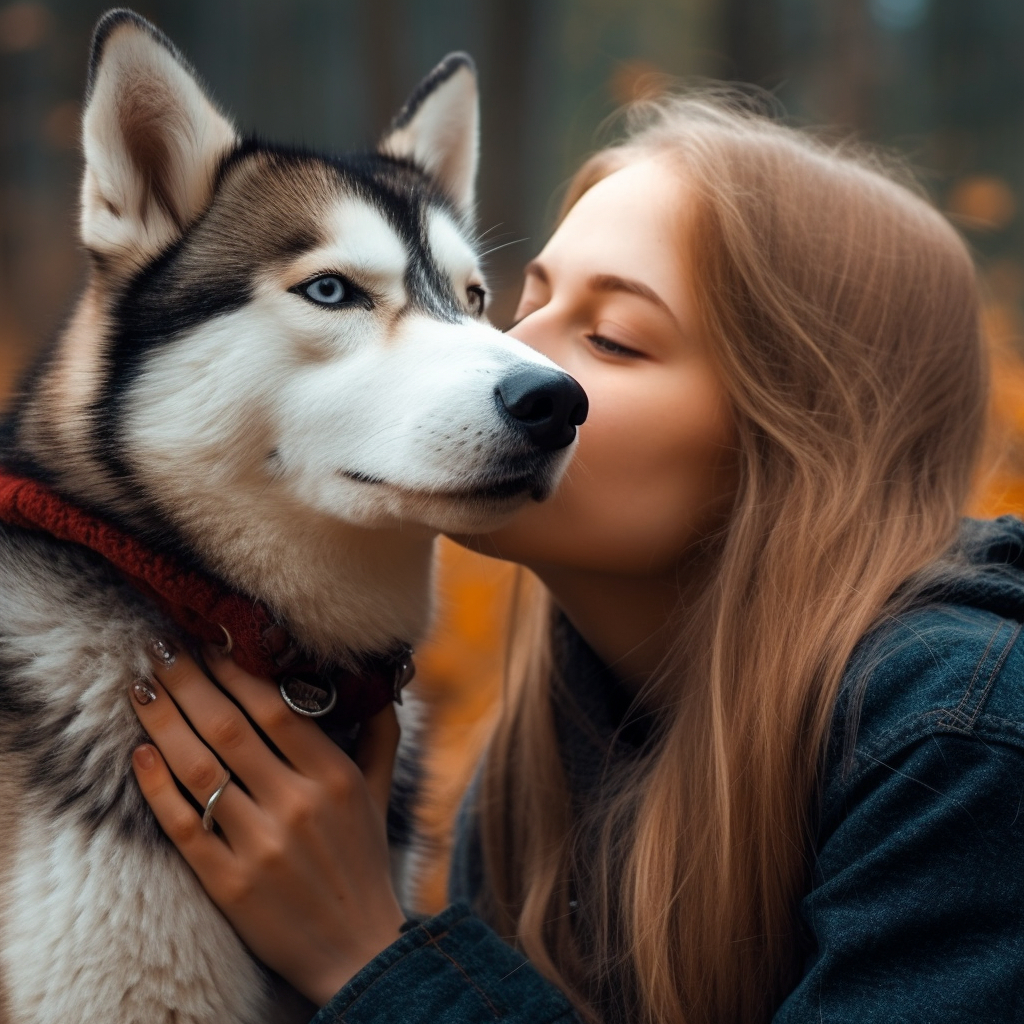
Encouragement to follow the guide and enjoy grooming your Husky
By following this comprehensive grooming guide, you can ensure that your Husky stays healthy, comfortable, and looking their best. Embrace the grooming process as a bonding experience and an opportunity to keep your Husky happy and well-cared for. With consistency and patience, you’ll master the art of Husky grooming and enjoy the benefits it brings to both you and your furry friend.
Return back to: Siberian Husky breed
Related Image Galleries:
+ Siberian Husky Pictures
+ Husky puppies
+ Husky wallpaper
+ Husky Images
+ Husky clipart
Articles on Specific Grooming Topics:
+ Husky deshedding
+ Husky brushes
+ Trimming a Husky’s nails
+ Washing a dog
+ Cleaning dogs teeth
+ Cleaning a Husky’s ears
Other Articles on Siberian Huskies:
+ Husky personality
+ Best Husky crates
+ Walking a Husky
+ Husky crate training
+ Husky training tips